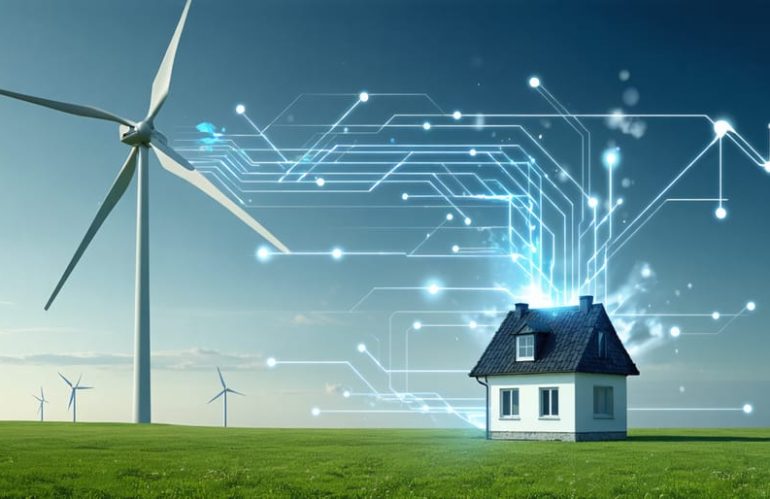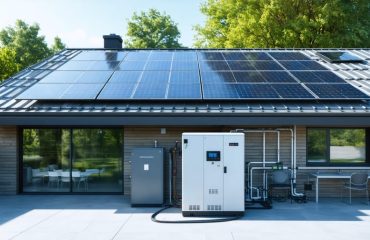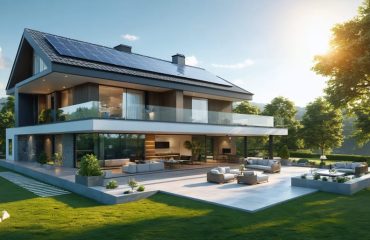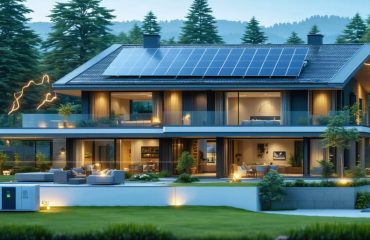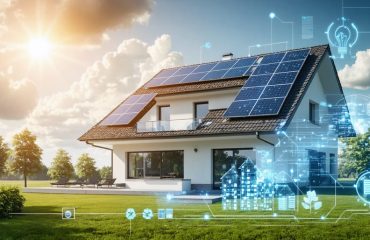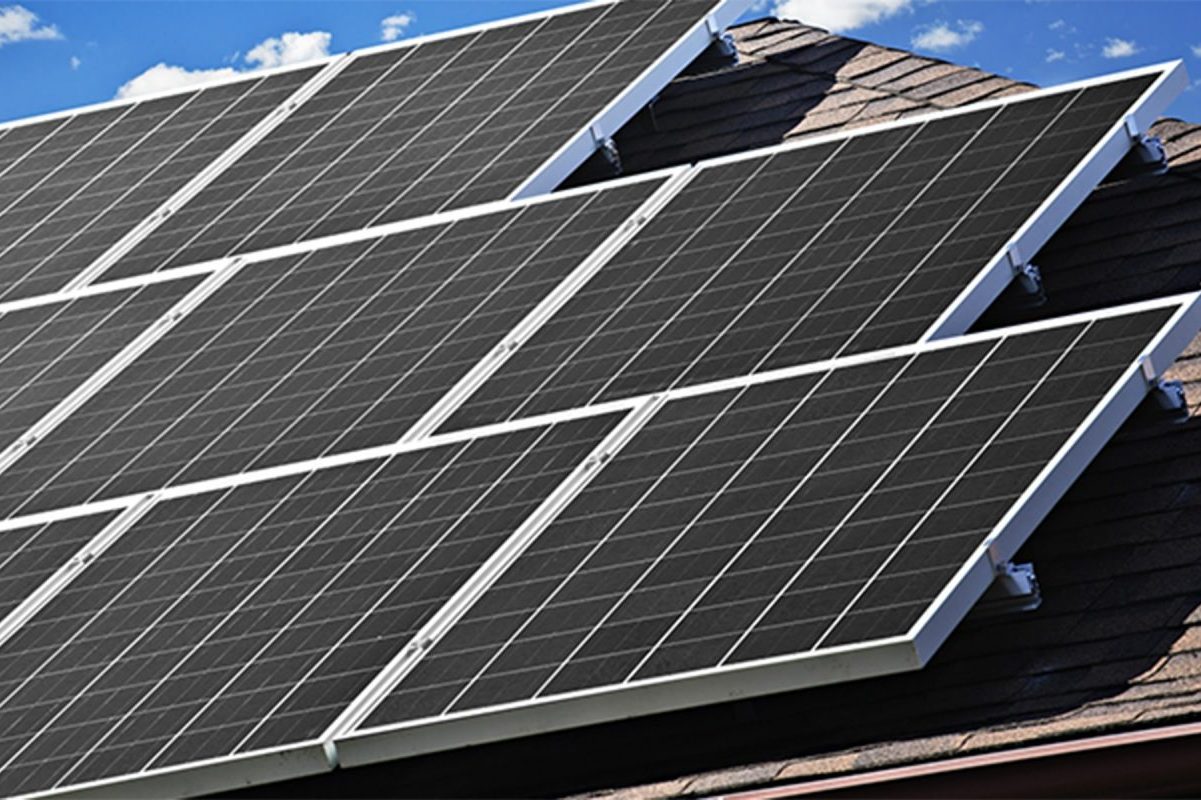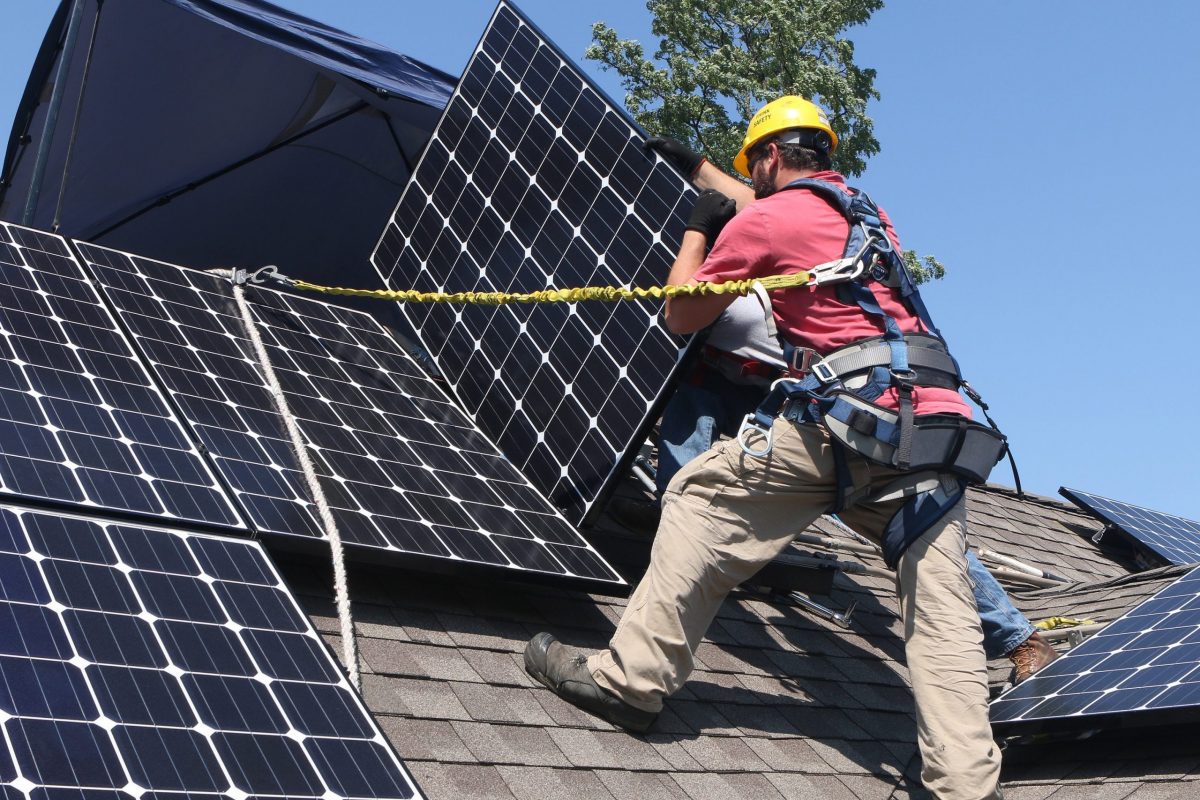Wind turbines harness one of nature’s most powerful forms of kinetic energy, transforming the simple motion of air into clean, renewable electricity that can power our homes. As wind speeds increase, the potential for energy independence through wind power grows exponentially – in fact, doubling wind speed creates an eight-fold increase in available energy. This remarkable efficiency makes wind power an increasingly attractive option for homeowners looking to reduce their carbon footprint and energy bills.
Modern wind turbines capture this kinetic energy through aerodynamically designed blades that convert up to 45% of wind’s motion into usable electricity – a significant improvement over early designs. For perspective, a typical residential turbine spinning in 12-mph winds can generate enough power to run essential household appliances, demonstrating how this abundant natural resource can become a practical part of our sustainable energy future.
How Wind Turbines Capture Nature’s Power
The Science Behind Wind Energy
Wind energy harnesses a natural process that’s happening around us every day. When the sun heats different parts of Earth unevenly, it creates areas of high and low pressure in our atmosphere. Air naturally moves from high-pressure areas to low-pressure areas, creating what we experience as wind.
As wind moves, it carries kinetic energy – the energy of motion. When wind encounters the blades of a turbine, this kinetic energy is transferred to the blades, causing them to spin. Think of it like a pinwheel you might have played with as a child, but on a much larger scale and with much more power.
The amount of kinetic energy in wind depends on two main factors: wind speed and air density. The faster the wind moves and the denser the air, the more energy is available for capture. This is why wind turbines are often placed in locations with consistently strong winds, like hilltops or offshore areas, where they can capture maximum energy from the moving air and convert it into clean, renewable electricity for our homes.
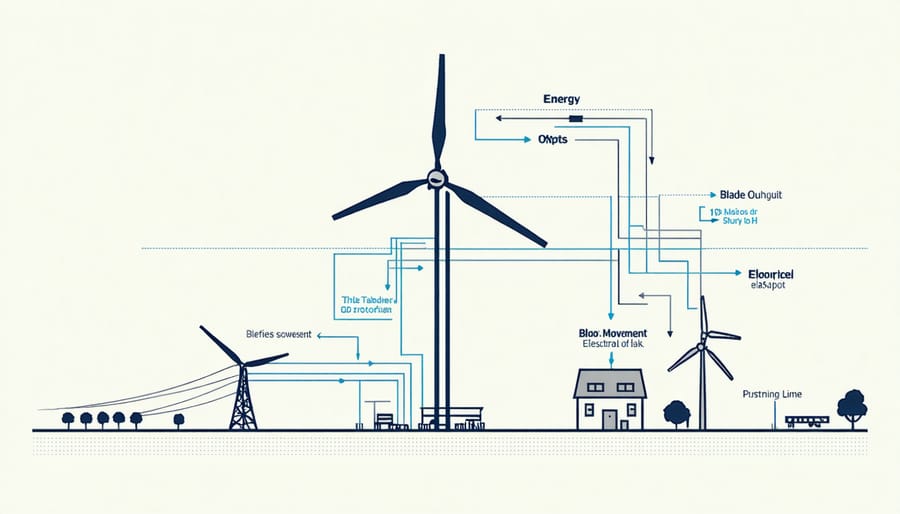
From Motion to Electricity
When wind blows across turbine blades, it creates a fascinating chain reaction that transforms motion into usable electricity. The process starts with the wind’s kinetic energy pushing against the carefully designed blades, causing them to spin. These blades are connected to a shaft inside the turbine’s housing, which turns along with them.
As the shaft rotates, it powers a generator – the heart of the energy conversion process. Inside the generator, magnets and copper wire coils work together in a process called electromagnetic induction. When the magnets spin past the copper coils, they create an electrical current.
This electrical current starts off as raw power that needs to be refined. The turbine’s internal systems adjust the electricity’s voltage and frequency to match your home’s requirements. Special inverters and transformers help make this electricity compatible with your household appliances and the power grid.
The end result? Clean, renewable electricity that can power your home, all created from the simple motion of the wind. It’s an elegant solution that harnesses nature’s power without producing harmful emissions or waste products.
Practical Benefits for Your Home
Energy Cost Savings
Wind turbines can significantly reduce your monthly energy expenses while contributing to a more sustainable future. When integrated into self-sufficient power systems, wind turbines can generate substantial cost savings over their operational lifetime.
The average residential wind turbine system can reduce electricity bills by 50-90% depending on wind conditions and energy consumption patterns. For a typical household spending $200 monthly on electricity, this translates to potential annual savings of $1,200-$2,160. While the initial installation costs range from $15,000 to $35,000, many homeowners recover their investment within 5-10 years through reduced utility bills and available tax incentives.
Federal tax credits currently cover 30% of the installation costs, and many states offer additional rebates and incentives. Some utility companies even provide net metering programs, allowing you to sell excess power back to the grid, further increasing your savings potential.
Maintenance costs are relatively low, typically averaging $300-500 annually, making wind energy an economically viable long-term investment. As electricity rates continue to rise, the financial benefits of wind power become increasingly attractive, offering both immediate savings and protection against future energy cost increases.
Reliability and Consistency
When paired with solar panels, wind turbines create a highly reliable and consistent energy system that works around the clock. While solar panels generate power during daylight hours, wind turbines can continue producing energy day and night, as long as there’s sufficient wind. This complementary relationship helps maintain a steady power supply for your home.
During winter months, when solar production typically decreases due to shorter days and cloud cover, wind energy often picks up the slack. This is because winter tends to bring stronger and more frequent winds, perfectly offsetting the seasonal dip in solar generation. Similarly, summer brings longer days for solar production while still providing enough wind for turbine operation, especially during evening hours.
The reliability of this combined system is further enhanced by modern energy storage solutions. By storing excess energy produced during peak wind or solar conditions, you can ensure a constant power supply even during periods of low wind or minimal sunlight. Smart management systems automatically switch between wind and solar power, depending on which source is more abundant at any given time.
For homeowners, this means fewer disruptions in power supply and reduced dependency on the grid. The combination of wind and solar also typically results in more consistent energy bills throughout the year, as the two sources naturally balance each other out across different weather conditions and seasons.
Combining Wind and Solar: The Perfect Match
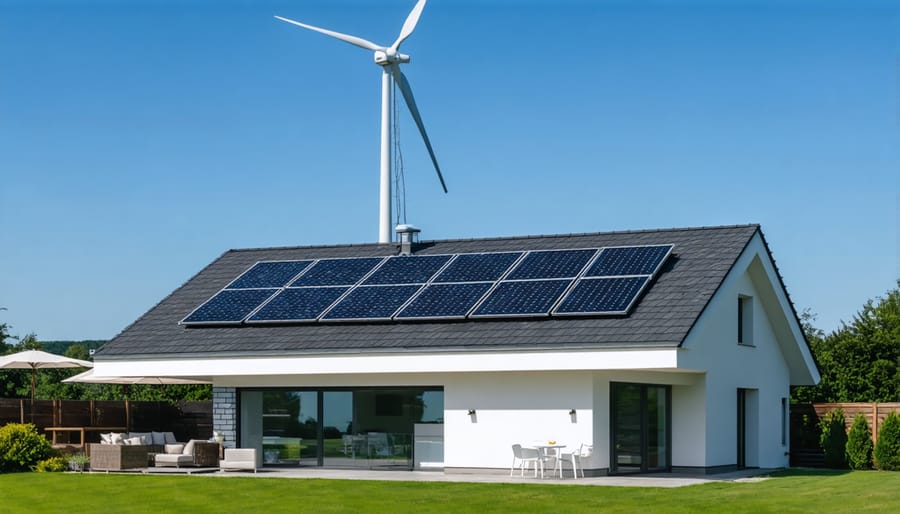
Day and Night Coverage
Wind energy offers a perfect complement to solar power, creating a more reliable 24/7 renewable energy solution. While solar panels only generate electricity during daylight hours, wind turbines can produce power any time the wind blows, including at night. This round-the-clock potential makes wind energy particularly valuable for maintaining consistent power supply.
Many regions experience stronger wind patterns during evening and nighttime hours, precisely when solar panels aren’t producing. This natural pattern helps balance energy production throughout the day. During summer, for example, solar panels might generate most of your daytime power needs, while wind turbines take over during evening hours when temperatures cool and breezes pick up.
The combination of wind and solar creates what energy experts call a “hybrid renewable system.” This pairing is especially effective because wind and solar peak at different times, both daily and seasonally. In winter months, when solar production decreases due to shorter days, wind turbines often generate more power due to stronger seasonal winds.
For homeowners, this complementary relationship means more consistent clean energy production and potentially lower energy storage requirements, as the two sources can work together to maintain steady power supply throughout the day and night.
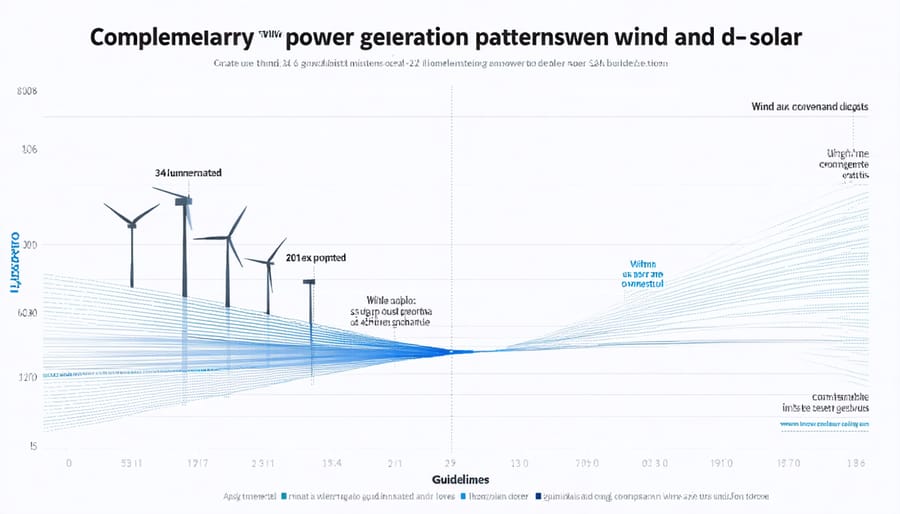
Seasonal Efficiency
Wind turbines and solar panels complement each other beautifully throughout the year, creating a more reliable and efficient energy system. During summer months, when solar panels are at their peak performance, wind turbines might experience lower output due to gentler breezes. However, as autumn approaches, wind speeds typically increase just as solar production begins to decrease with shorter days.
Winter presents a particularly advantageous scenario for wind energy systems. While solar panels may struggle with snow coverage and reduced daylight hours, winter storms and strong seasonal winds can significantly boost turbine performance. This natural balance helps maintain consistent energy production throughout the colder months.
Spring brings a mix of sunny days and windy conditions, making it an ideal season for combined energy systems. This seasonal variation in wind and solar resources means that homeowners with both systems installed can enjoy more stable energy production year-round, reducing their dependence on grid power.
By leveraging these seasonal patterns, a hybrid wind-solar system can provide more reliable power generation than either technology alone, offering homeowners greater energy independence and potentially higher cost savings across all seasons.
Getting Started with Wind Energy
Starting your wind energy journey begins with a simple assessment of your property’s potential. First, evaluate your average wind speeds using online wind maps or consult with local meteorological data. Ideal locations typically experience consistent winds of at least 10 mph, though modern turbines can operate effectively at lower speeds.
Next, check your local zoning laws and homeowners’ association regulations regarding wind turbine installation. Many municipalities have specific height restrictions and setback requirements that you’ll need to consider. Don’t forget to research available incentives – many states offer tax credits or rebates for residential wind energy systems.
Consider starting with a small-scale wind turbine system, which can cost between $3,000 to $8,000 for a basic setup. These systems can generate enough power to offset 10-30% of your home’s electricity consumption. For optimal results, position your turbine away from obstacles like tall buildings or trees that could create turbulence.
Professional installation is crucial for safety and efficiency. Look for certified installers who can assess your site, recommend appropriate equipment, and ensure proper connection to your home’s electrical system. Many installers also offer maintenance packages to keep your system running smoothly.
Remember that wind energy systems work best when combined with other renewable energy sources, creating a more reliable power supply throughout the year. Start small, monitor your results, and expand your system as needed based on your energy consumption patterns.
Wind turbines represent a powerful solution for homeowners seeking energy independence and a cleaner environmental footprint. By harnessing the natural kinetic energy of wind, these systems can significantly reduce or eliminate monthly electricity bills while contributing to a more sustainable future. The technology has become increasingly affordable and efficient, making it a practical choice for many households. When combined with solar panels and modern battery storage systems, wind turbines can provide reliable, renewable energy year-round. Taking action today to invest in wind energy not only helps protect our environment but also offers long-term financial benefits through reduced energy costs and potential tax incentives. By embracing wind power, we can each play a vital role in creating a more sustainable and energy-independent future for generations to come.

